The SFUSD Policy Change That Will Help Foster Youth Graduate With A Diploma
by Brittni Tanenbaum, Educational Advocacy Coordinator
Earlier this year, San Francisco Unified School District (SFUSD) became the first school district in the state to grant high school diplomas to students who did not pass the California High School Exit Exam (CAHSEE). With this change, more students left SFUSD with a high school diploma, enabling them to pursue postsecondary education or join the workforce with a secondary credential.
More recently, On October 7th, Governor Brown signed Senate Bill (SB) 172, which required the rest of California to follow San Francisco’s lead. With the passage of SB 172, the CAHSEE is suspended for the next three academic school years. A panel will be appointed to review whether to offer the test again in the future.
SB 172 also requires local educational agencies to retroactively grant high school diplomas to students who met all applicable graduation requirements except for passing the CAHSEE, including students in adult education.
History of the CAHSEE
Beginning with the graduating class of 2006, students in public high schools in California became required to pass the CAHSEE, to test for grade-level skills in mathematics and language arts, to receive a high school diploma. With the exception of students who have a disability, with an individualized education program (IEP) and/or a Section 504 plan, students who did not pass the test were not given a diploma. Instead, they were granted a Certificate of Completion.
CAHSEE’s Effect on Foster Youth
The exam ultimately created barriers for students from underrepresented populations, including youth in the foster care system. Compared to 76% of the general student population, only 49% of youth in foster care passed both sections when first administered in 10th grade.
And while a Certificate of Completion demonstrates that a student completed high school courses, it does not allow a student to receive essential financial aid or to earn a degree from a post-secondary institution. Although a person could enroll in a post-secondary institution, such as a community college, and work towards completing requirements, the student would not be able to transfer to a 4-year university or be awarded an Associate’s Degree before earning a High School Diploma, GED, or other equivalent. Additionally, many employers do not view a Certificate of Completion as equivalent to a high school diploma.
With the passage of this bill, a multitude of former students in California will be able to stop worrying about earning a high school diploma or GED, and can work towards future goals.
Next Steps
Beginning January 1, 2016, former students who satisfied all requirements for graduation, except for passing the CAHSEE, are entitled to a high school diploma. However, local educational agencies are not required to notify former students of eligibility and the burden is on the former student to contact the agency.
All students who believe they are eligible to receive a high school diploma should contact the school district where they last attended high school.
San Francisco CASA is committed to supporting youth in foster care along their educational paths. Volunteers through SFCASA are consistently involved in each youth’s learning and advocate for the individual needs in the youth’s education.
If there is a current or former foster youth in your life who you think may qualify, please speak with them about this change and encourage them to reach their last school district.
For further clarity on the suspension of the CAHSEE and eligibility to receive a high school diploma, please visit: http://www.cde.ca.gov/ta/tg/hs/
